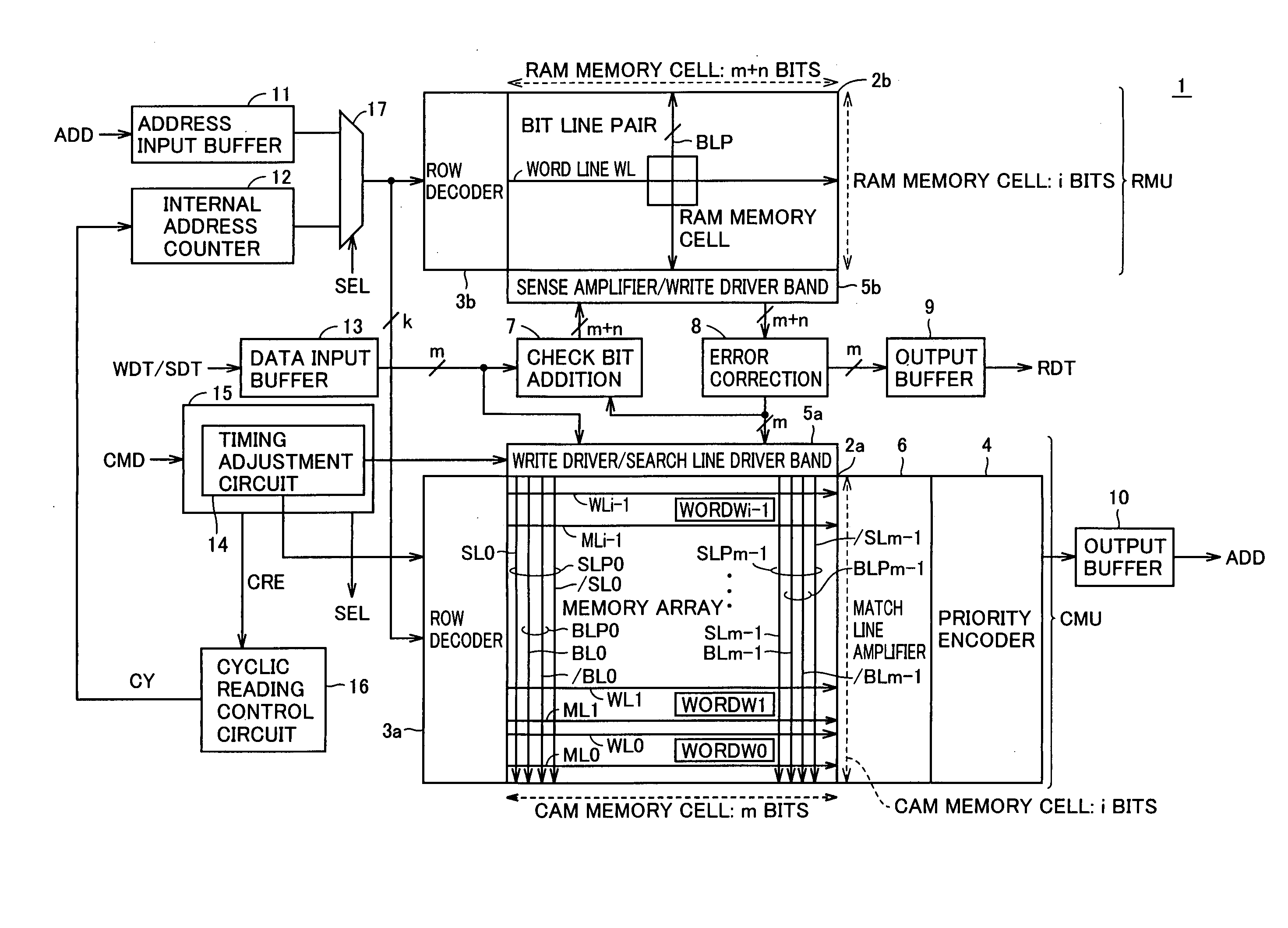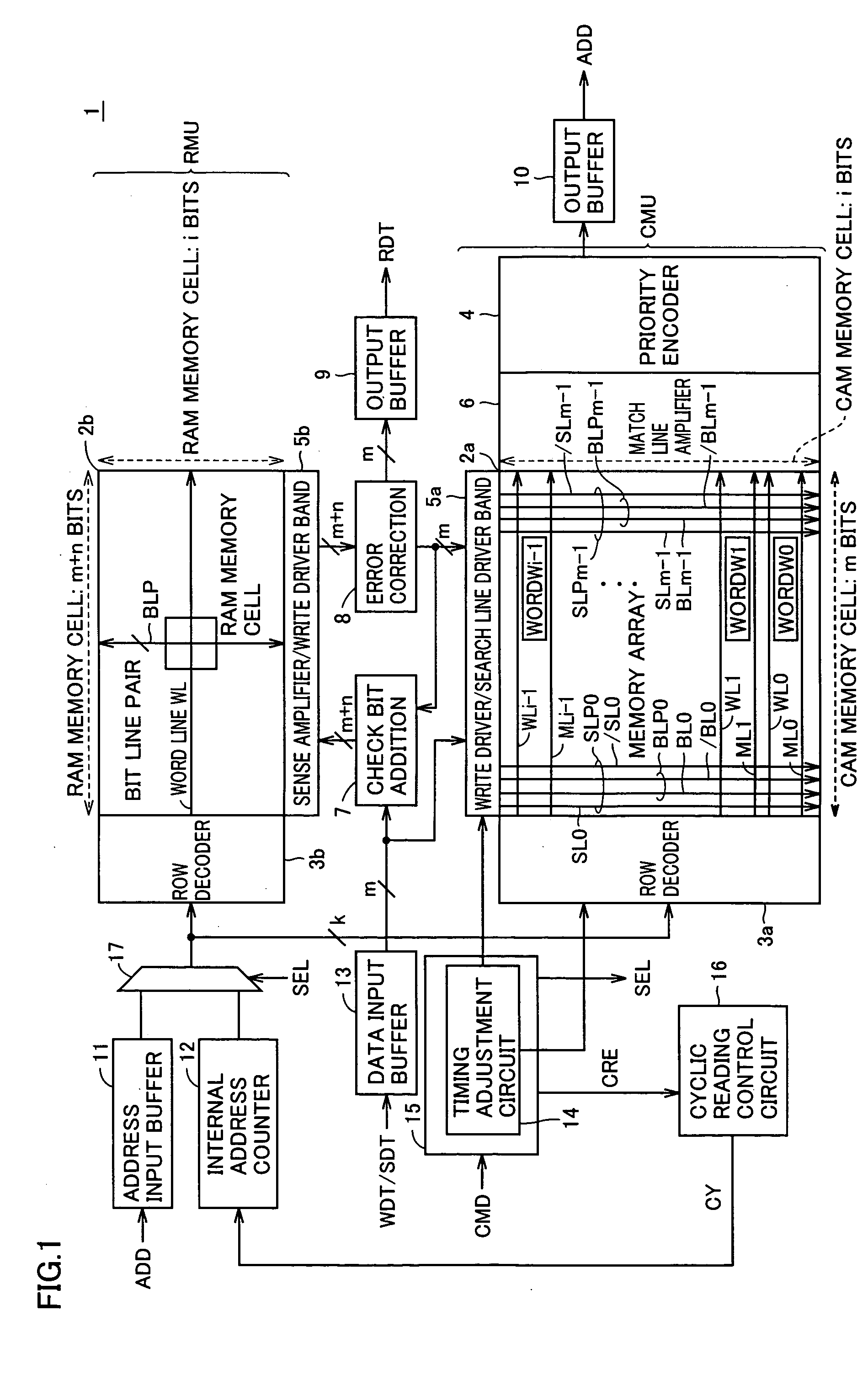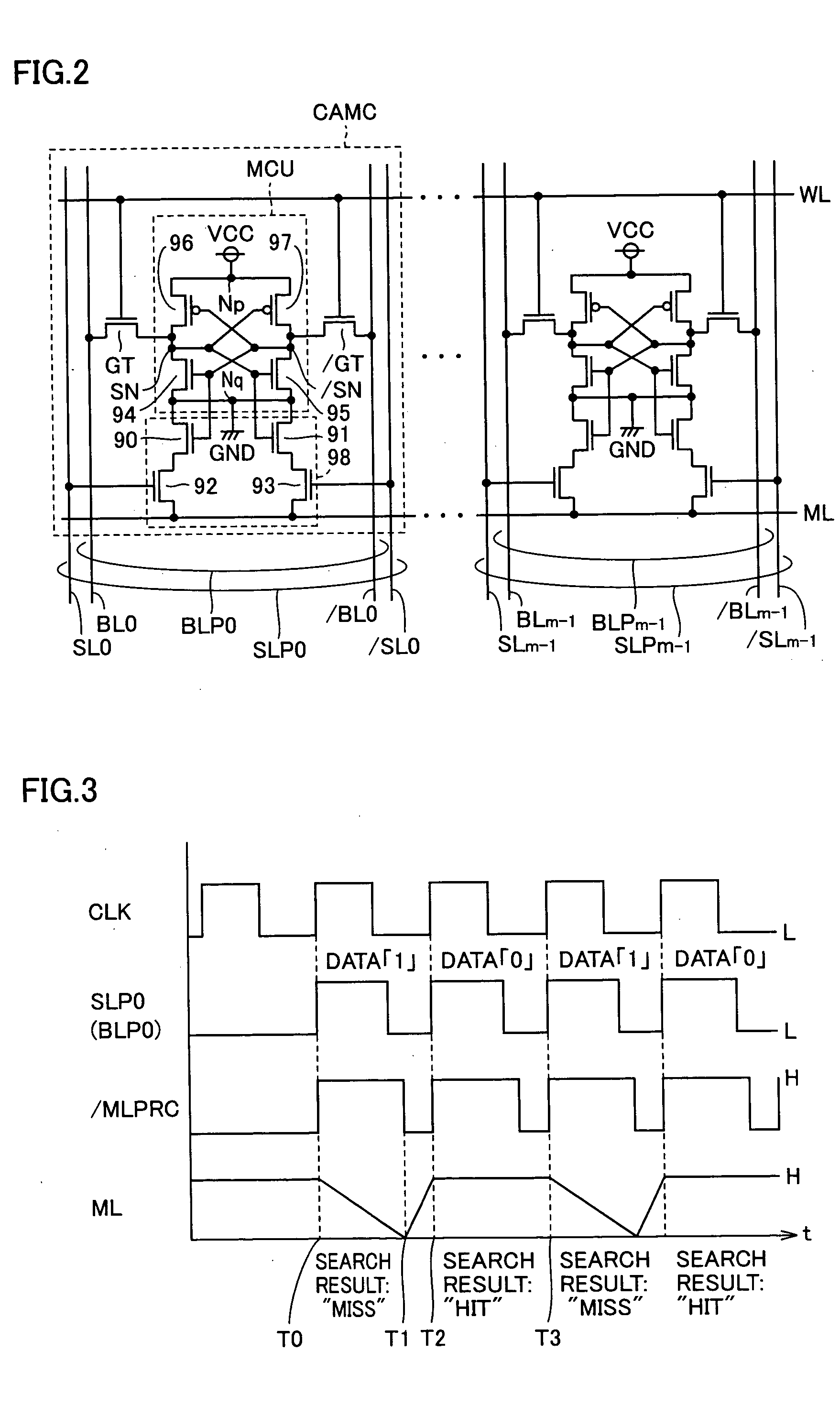Associative memory capable of searching for data while keeping high data reliability
a data and data technology, applied in the field of content addressable memory, can solve the problems of loss of data reliability, generalized soft error, inability to obtain desired output, etc., and achieve the effect of increasing the resistance to soft errors and high data reliability
- Summary
- Abstract
- Description
- Claims
- Application Information
AI Technical Summary
Benefits of technology
Problems solved by technology
Method used
Image
Examples
first embodiment
[0028] Referring to FIG. 1, an associative memory 1 according to an embodiment of the present invention includes a CMU of a CAM unit (hereinafter CAM CMU) chiefly for performing a matching comparison between data, i.e., searching for data, an RMU of a RAM unit (hereinafter RAM RMU) for reading data for example, and peripheral circuitry for controlling them. Specifically, the peripheral circuitry includes a check bit addition circuit 7, an error correction circuit 8, output buffers 9, 10, an address input buffer 11, an internal address counter 12, a data input buffer 13, a control circuit 15 for controlling the whole of associative memory 1, a cyclic reading control circuit 16 for controlling cyclic reading discussed hereinlater, and a selector 17.
[0029] Configuration of CAM CMU
[0030] The CAM CMU includes a memory array 2a having memory cells arranged in rows and columns for storing storage information used for the matching comparison, namely for searching for data (the memory cell...
second embodiment
[0119] Referring to FIG. 9 showing an associative memory 1# according to a second embodiment of the present invention, a difference between associative memory 1# and associative memory 1 in FIG. 1 described above is that a CAM CMU# and a RAM RMU# are used instead of the CAM CMU and the RAM RMU respectively. Specifically, in the CAM CMU# and the RAM RMU#, memory arrays 2#a and 2#b are used instead of memory arrays 2a and 2b. Regarding other features, the associative memories are identical and the detailed description thereof is not repeated here.
[0120] Specifically, in memory array 2#a, memory cells CAMC# arranged therein are used instead of memory cells CAMC. Accordingly, the number of bits of memory array 2#b is adjusted. Memory cells CAMC# are so-called TCAM cells.
[0121] In FIG. 9, bit line pairs BLLP0, BLRP0, BLLPm-1, BLRPm-1 are shown as representative ones and search line pairs SLP0, SLPm-1 are also shown.
[0122] Referring to FIG. 10, memory cell CAMC# in the second embodimen...
PUM
 Login to View More
Login to View More Abstract
Description
Claims
Application Information
 Login to View More
Login to View More - R&D
- Intellectual Property
- Life Sciences
- Materials
- Tech Scout
- Unparalleled Data Quality
- Higher Quality Content
- 60% Fewer Hallucinations
Browse by: Latest US Patents, China's latest patents, Technical Efficacy Thesaurus, Application Domain, Technology Topic, Popular Technical Reports.
© 2025 PatSnap. All rights reserved.Legal|Privacy policy|Modern Slavery Act Transparency Statement|Sitemap|About US| Contact US: help@patsnap.com



